 Panasonic today announced the newest addition to its LUMIX G Micro System line-up of advanced digital interchangeable lens system cameras based on the Micro Four Thirds system standard. The new LUMIX DMC-GF1 debuts as the world’s smallest and lightest system camera with built-in flash.
Panasonic today announced the newest addition to its LUMIX G Micro System line-up of advanced digital interchangeable lens system cameras based on the Micro Four Thirds system standard. The new LUMIX DMC-GF1 debuts as the world’s smallest and lightest system camera with built-in flash.
The DMC-GF1 features an elegant, compact flat body and combines great performance with ultimate operating and shooting ease. Furthermore, it effectively optimizes the advantages of a system camera to assure outstanding image quality. The new camera is capable of recording vivid still shots, as well as smooth, beautiful motion pictures. It also features the advanced AVCHD Lite movie for recording extended HD movies, networking with other AV devices and recording in the Motion JPEG format for greater compatibility with PCs.
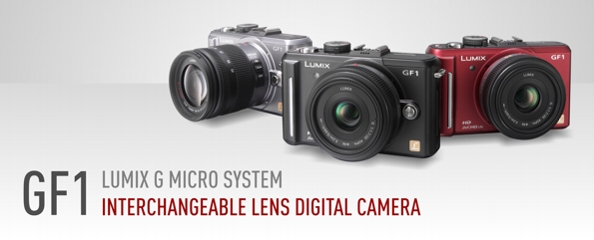
Lumix G Micro System Camera – DMC-GF1
The DMC-GF1 comes with unique functions that include exposure meter and shutter speed preview through the live view. A number of accessories, including the Live View Finder that provides full-time live view, makes photography a lot more fun, while expanding the user’s artistic capabilities. The camera comes in three attractive body colors: true black, active red, and sleek silver. Experienced photographers will find the GF1 an ideal everyday camera, while those new to system cameras will see that it gives them the potential to explore realms of photography far beyond the limits of compact cameras.
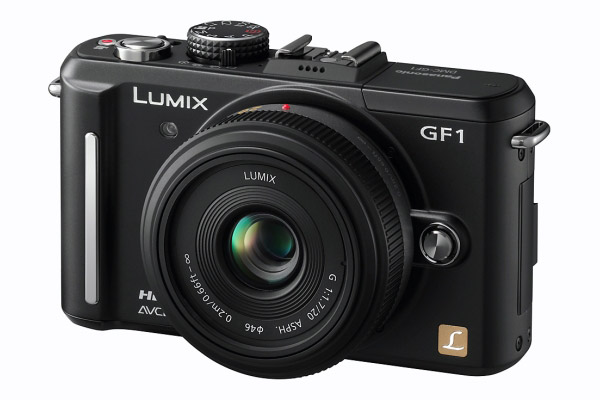
The DMC-GF1 does not contain the pentaprism found on other standard interchangeable lens cameras.

This mirror-less structure allows for an extremely thin neo-classic body design and significantly reduces the size of the G1 by 35% and its weight by 26%. Despite its size, the GF1 comes equipped with a built-in flash and boasts a large, 3.0-inch Intelligent LCD with a wide viewing angle and full 460,000-dot resolution. The Intelligent LCD offers extremely fine, automatic backlight control in combination with high resolution for outstanding viewing in sunny outdoor or dim indoor situations.
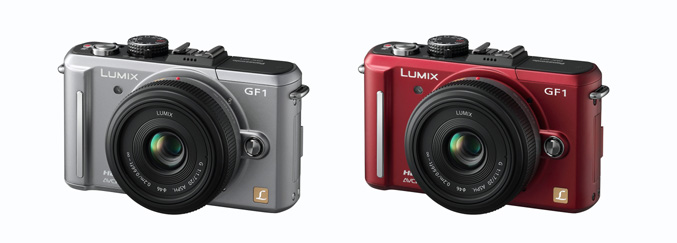
4/3-type 12.1-megapixel Live MOS sensor
Panasonic has succeeded in raising the level of image quality for all LUMIX G Micro System cameras to rival or even surpass that of D-SLR cameras. The 4/3-type 12.1-megapixel Live MOS sensor in the GF1 offers the best of both worlds – the superior image quality of a CCD sensor, and the lower power consumption of a CMOS sensor. It can deliver up to 60 frames-per-second Full-time Live View images, while reproducing images with fine detail and rich gradation. The sophisticated LSI (Venus Engine HD) separates chromatic noise from luminance noise and applies noise reduction to each, so users can capture beautiful images, even when shooting at high ISO sensitivity levels.
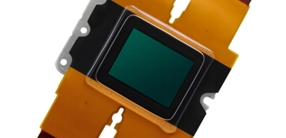
The DMC-GF1 also features My Colour mode with a total of seven preset effects – Expressive, Retro, Pure, Elegant, Monochrome, Dynamic Art, and Silhouette while inheriting the previous Custom mode that lets users manually set the colour, brightness and saturation levels. With the Live View function, users can see how these settings will affect the photo even before they shoot.
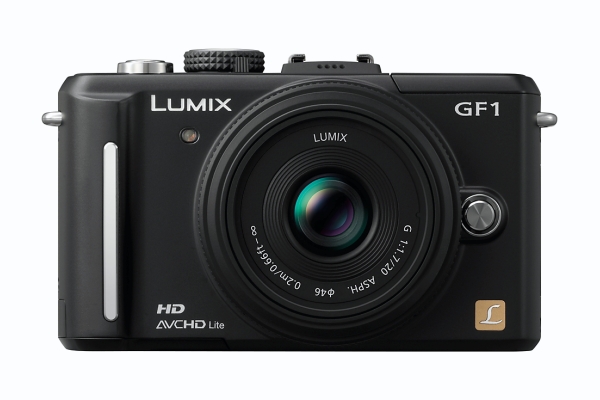
The DMC-GF1 can record 1280 x 720 high-definition motion picture in AVCHD Lite that features long recording time and high compatibility with audio-visual equipment. The action starts at a press of a button while most of the settings for photo recording are managed. Movie recording formats include HD Motion JPEG in 1280 x 720, QVGA, VGA and WVGA. Beginners can record excellent movies, because the popular iA (Intelligent Auto) is also available for motion image recording. Optical Image Stabilizer (O.I.S.) helps prevent handshake when using high-powered zoom, while Face Detection automatically detects a face in the frame and adjusts focus, exposure, contrast, and skin complexion so it always turns out beautifully. Intelligent Exposure continually checks the ambient light level and adjusts the exposure setting as conditions change. Finally, Intelligent Scene Selector automatically switches between Normal, Portrait, Macro, Scenery, and Low Light modes according to the situation to optimize visual quality.
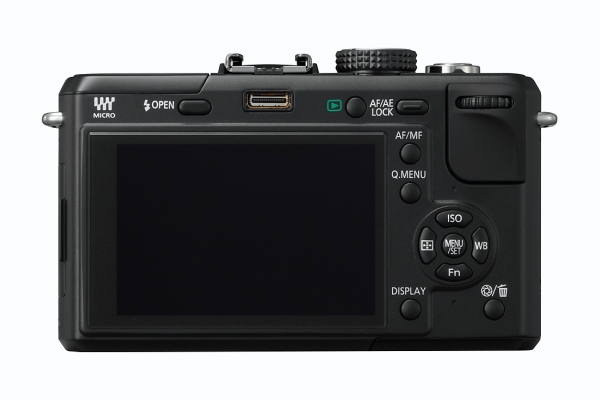
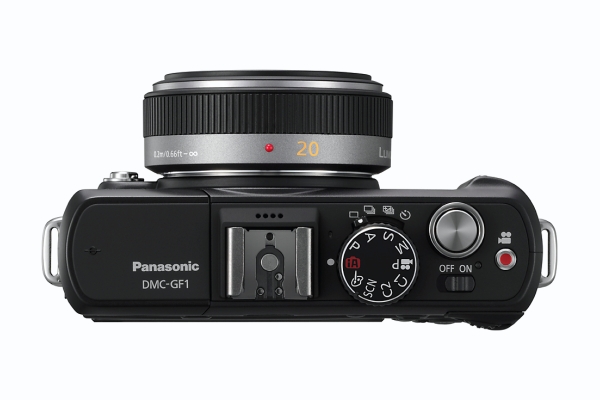
The contrast AF system in the DMC-GF1 features the industry’s high-speed (approx. 0.3 sec with a Lumix G standard zoom lens H-FS014045.) Users can choose from multiple-area AF with up to 23 focus areas, 1-area AF with a selectable focus area, Face Detection, and AF Tracking. The DMC-GF1 also has a Quick AF function that begins focusing as soon as the user aims the camera to enable quick focusing. Continuous AF always keeps the subject in focus.
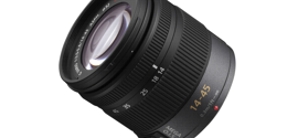
Improved iA mode. With Face Recognition
The DMC-GF1 has advanced functions that will satisfy experienced photographers and yet is easy for beginners to use, thanks to its improved iA mode. With Face Recognition*, up to six faces can be registered, and up to three can be simultaneously recognized to show their names once registered.

When the familiar face appears in the frame again, the camera displays the name of that person and prioritizes focus and exposure so that the face is bright and in sharp focus. In addition to these advanced functions, the iA mode includes fundamental functions users need in a good digital still camera, including MEGA O.I.S., which helps prevent blurring from hand-shake, and Intelligent ISO Control, which reduces motion blur by adjusting the ISO sensitivity if the subject moves as the shot is taken. Intelligent Exposure optimizes the exposure for each part of an image to prevent blocked shadows and blown highlights and ensure that gradation and details are reproduced beautifully. It now features an automatic backlight compensation function that activates whenever the camera detects that the subject is in backlight. Intelligent Scene Selector automatically detects the four most common shooting situations – Portrait, Scenery, Close-up and Low-light – and switches to the appropriate Scene mode. The user can activate all of these functions simply by selecting iA mode.
Source: Panasonic
